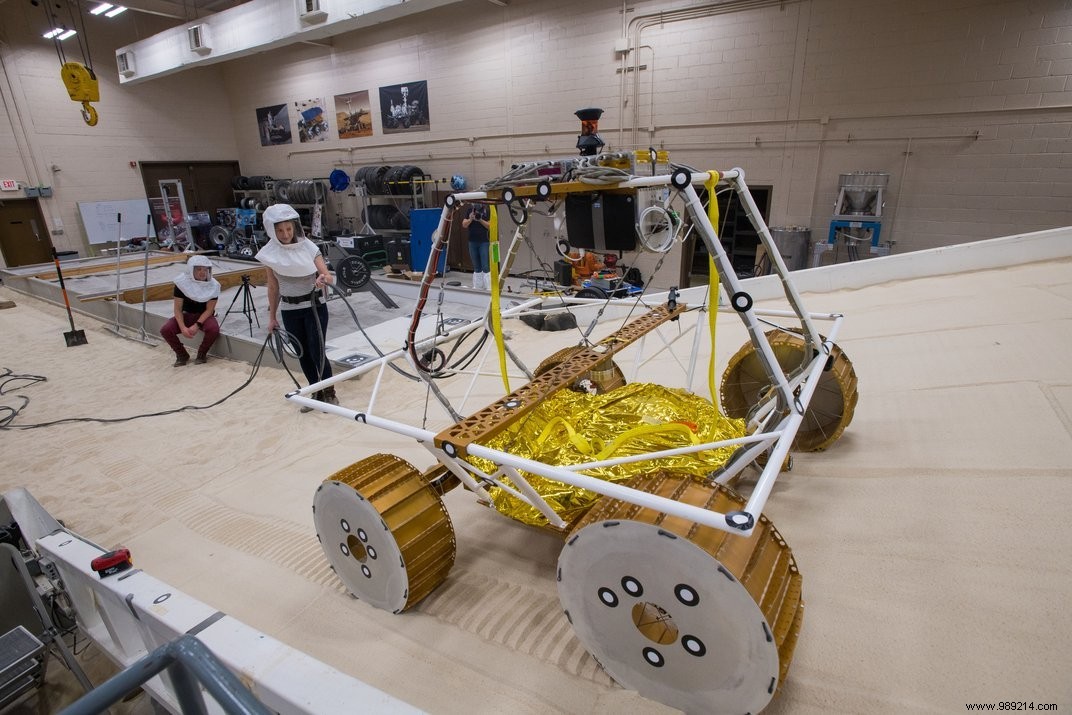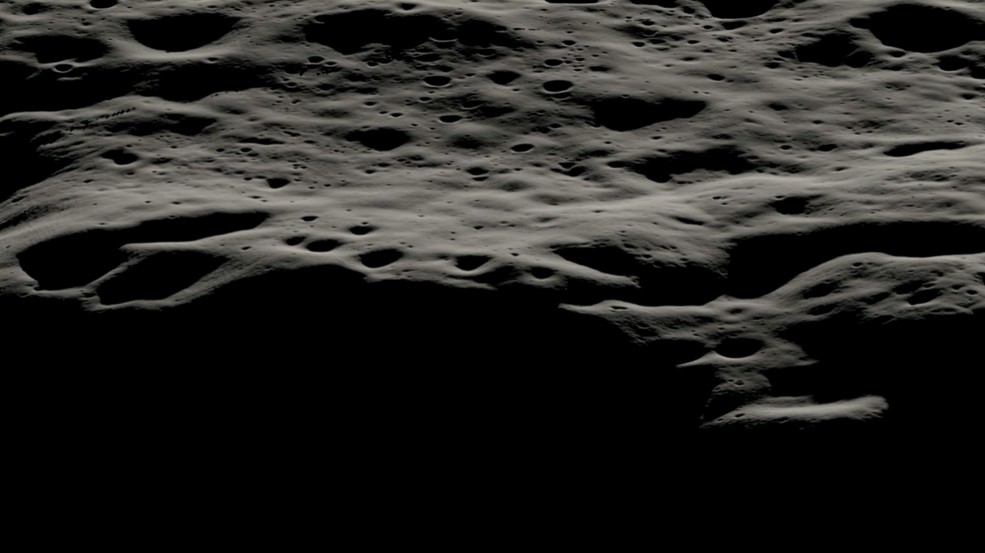The Volatiles Investigating Polar Exploration Rover, or more simply VIPER, will land on the lunar south pole around 2023. Its main objective will be to map and analyze water ice concentrations in near real time. The distribution and availability of water could support future human settlements in space.
Water will be an essential resource for human exploration of space. And for good reason, it can be drunk and used to grow plants. It could also shield humans from radiation and be used to make breathable oxygen or rocket fuel. It's quite simple:if we can find a way to transform and use water in situ , then human space travel for long periods of time will become possible.
As part of the Artemis program, which aims to return humans to lunar soil permanently, NASA and its partners must therefore evaluate upstream the amount of this resource in the region . With this in mind, the agency has ordered a new rover named VIPER (for Volatiles Investigating Polar Exploration Rover).
A few days ago, the American agency set its sights on the Nobile crater (93 square kilometers) as the exploration ground for its new buggy, developed by the Astrobotic company.
This environment was obviously not chosen at random. Thanks to remote sensing work, we do indeed know that the lunar South Pole, and this crater in particular, potentially contains enormous amounts of water . But where exactly this water is and how it got there still remains a mystery.
To operate, the robot will use a meter-long drill guided by a neutron spectrometer designed to detect wetter areas below the surface. Two on-board spectrometers will also be used to analyze the samples collected. Note that VIPER is unlikely to find water ice in large chunks or sheets like those found on Earth. Scientists imagine rather small fragments mixed with lunar dust .
"If the water is literally frozen outside of these moon dust particles, then it will be easily accessible “, underlines Tracy Gregg, of the University of Buffalo College, Smithoninan. "You shovel it up and put it in a heater to melt it before you pick it up ".
If, on the other hand, this water is found to be "bound" to lunar materials, then the extraction process will be more complicated. “You should actually do chemistry. This does not mean that it will be impossible to access water, it will simply be more expensive and take longer to obtain “, continues the specialist.

The rover will concentrate its operations in areas that are constantly deprived of sunlight (otherwise the water would evaporate immediately). Remember that the axis of the Moon has only a slight inclination compared to that of the Earth, which means that our star does not rise as high on the horizon. As a result, several impact ponds offer permanently shaded areas.
In these dark environments that have not seen daylight for over three billion years, temperatures can drop to -204°C . Also, VIPER components must be designed and sufficiently tested to resist. The rover will also need to use solar-powered heaters in an effort to stay warm enough during these operations.

Since no satellite can be used to relay communications from the rover to Earth, the rover will also need a direct radio link to Earth. To do this, engineers will therefore need to avoid large landscape features like high mountains or steep crater rims that would normally block any signal.
During lunar nights (approximately two weeks each month), VIPER will also have to wait in a "shelter" until communications can resume. These "parking spots" will need to be particularly safe and sunny places for the rover to glean enough energy. Indeed, it will not be able to survive more than fifty hours of continuous darkness. Also, the mission is planned during the summer season at the South Pole , so as to maximize the periods of sunlight.
These works must last at least one hundred Earth days . VIPER and its lander will fly to the Moon aboard a SpaceX Falcon Heavy rocket. The total cost of this mission is expected to be around $660 million.